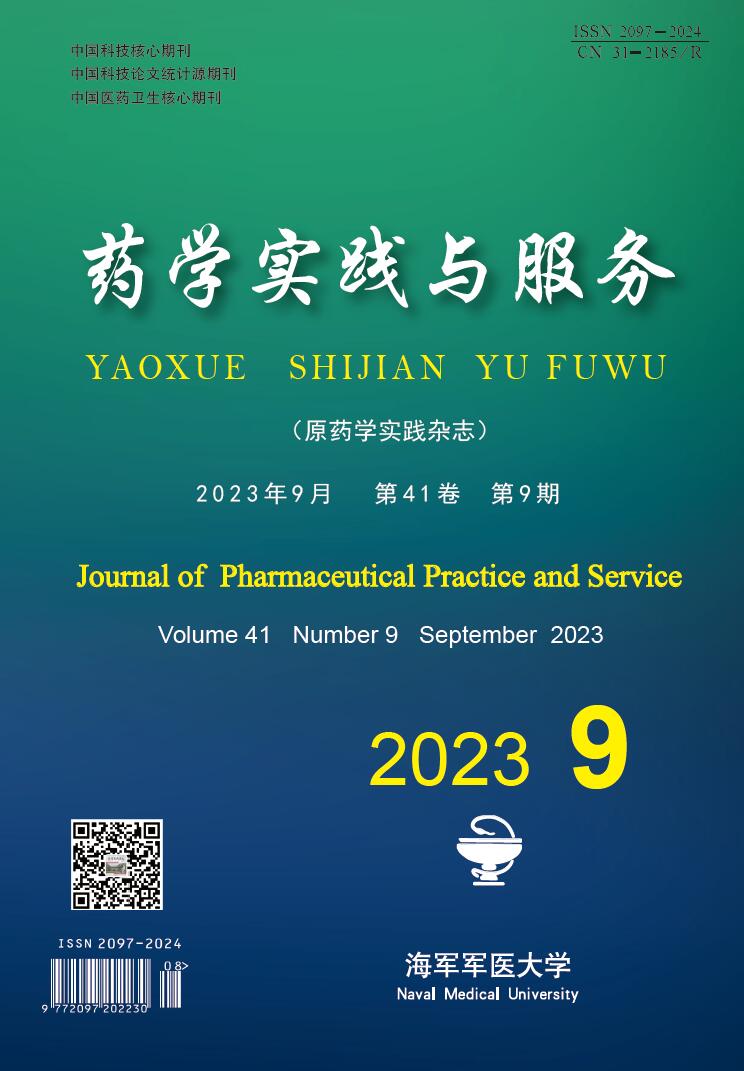-
核糖体蛋白(RP)是指构成核糖体的蛋白质,其与rRNA或核糖体亚基紧密连接,需高浓度盐和强解离剂(如3 mol/L LiCl或4 mol/L 尿素)才能将其分离。目前,已发现的RP有80多种,根据大小亚基的不同,RP可分为核糖体大亚基蛋白(RPL)和核糖体小亚基蛋白(RPS)[1]。RP主要有两种作用,一是参与核糖体的组装和蛋白质的生物合成,二是具有独立于核糖体的功能,称为核糖体外功能[2]。
-
RP是核糖体的重要组成部分,在核糖体生物合成和蛋白质翻译中起关键作用。根据蛋白质的结构特点,RP可分为α-蛋白质、β-蛋白质、α/β-蛋白质和α+β-蛋白质[3]。RP与rRNAs的几个结构域相互作用,形成域间连接,有助于维持核糖体组装的结构完整性[3]。
所有RP mRNA都具有5’末端寡嘧啶(TOP)片段,因此,调控TOP mRNA的翻译,可影响RP的表达[4]。研究发现,La蛋白能与TOP mRNA物理结合;microRNA、miR-10a等表观遗传因子能与5’非翻译区结合来促进翻译[4]。除此之外,许多RP还会经历包括磷酸化、泛素化、甲基化、乙酰化和SUMO化等翻译后修饰[5],这些翻译后修饰可能受环境因素的影响,也可能是基础性的,它们会赋予RP核糖体外功能。
-
RP除了参与核糖体的组装之外,还具有许多核糖体外功能,如调控基因表达、细胞增殖、分化、凋亡、DNA修复和其他多种细胞过程。
-
据报道,RP能调控特定基因的表达,如与病毒蛋白反应,阻碍病毒的转录或翻译过程[6]。除此之外,RP也能通过反馈机制,调节其自身基因的表达。有研究证明,RPL10a可直接与保守的特定元件结合,在负反馈过程中调节其自身pre mRNA的选择性剪接[7]。除此之外,RPS3、RPL11、RPL7等也具有调控基因表达的作用。
-
RP可影响细胞周期进程。细胞周期分为间期和有丝分裂期两个阶段,其中间期又分为DNA合成前期(G1期)、DNA合成期(S期)与DNA合成后期(G2期)。据报道,RPS3、RPL7、RPL15、RPS9等与细胞周期紊乱密不可分。RPS3在细胞周期的G2/M期能够与α-微管蛋白相互作用,其异常会破坏α-微管蛋白动力学,如RPS3低表达会出现有丝分裂中纺锤体形成异常、子细胞无法完全分离和脱落的现象[8],从而影响细胞周期进程。
-
细胞凋亡是细胞抵抗内在和外在压力造成不可修复损伤的主要防御机制之一。RPS29、RPL35a、RPS3等能够调控细胞凋亡。未磷酸化的RPS6可通过肿瘤坏死因子相关凋亡诱导配体(TNF-related apoptosis-inducing ligand,TRAIL),诱导细胞凋亡[9]。在调节细胞凋亡时,有些RP具有促凋亡的作用,而有一些RP是细胞凋亡的负调节剂。在高危骨髓增生异常综合征患者中,RPL23的表达与CD34+骨髓细胞凋亡呈负相关,其低表达能诱导细胞凋亡,引起G1/S细胞周期阻滞,抑制SKM-1/K562细胞活力[10]。
-
DNA的任何损伤都会破坏基因组的完整性,这对细胞来说是致命的,因此,DNA损伤修复过程至关重要。据报道,RP如RPS3、RPL3、RPL6、RPS27等可作为DNA损伤调节因子,参与DNA损伤修复过程。RPS3位于氧化性DNA损伤位点,能够与BER、APEX1和8-氧鸟嘌呤DNA糖基化酶(8-oxoguanine DNA glycosylase-1,OGG1)相互作用,增加OGG1糖基化酶的活性,有助于DNA的损伤修复[11]。
-
细胞增殖是生物体的重要生命特征,RP对细胞增殖的调节作用与癌症发生和进展联系密切。体外研究发现,RPL34是肿瘤细胞增殖所必需的,其能够促进胶质母细胞瘤细胞的存活,加重肿瘤恶性程度[12]。此外,RPL22的低表达能够激活MDM2-p53信号传导,促进MKN-45细胞的增殖[13]。许多研究证明,RPL23、RPS5、RPS15a等也可影响细胞增殖过程。
-
RP在调节细胞迁移和侵袭中发挥着不可或缺的作用。研究表明,RPLP1在肝细胞癌组织中高表达,其下调能显著抑制人肝癌细胞Hep3b细胞的迁移和侵袭[14]。此外,下调RPL34可明显降低胶质瘤细胞中p-JAK和p-STAT3的水平,其低表达可能是通过诱导JAK/STAT3信号通路的失活,抑制胶质瘤细胞的增殖和迁移[15]。据报道,RPS27、RPL23、RPS6等RP也可介导细胞的迁移与侵袭。
-
据报道,RP的失调与细胞恶性转化有关。在人类急性T淋巴细胞白血病中,RPL22单等位基因的缺失诱导T系祖细胞转化,最终加速胸腺淋巴瘤的发展。除此之外,RPLP1、RPL36a、RPL34也可诱导细胞转化,使疾病进一步恶化[16]。
-
血管生成,是从预先存在的脉管系统中形成新血管,与疾病的进展密切相关。许多RP如RPS19、RPL29、RPS6、RPS15a等能够通过调控血管生成来影响疾病的发展。研究表明,RPS15a可通过增强Wnt/β-catenin诱导的FGF18表达,促进肝细胞肝癌中的血管生成。[17]体外研究发现,诱导Huh7细胞过表达RPS15a,其能够以旁分泌方式,增加HUVEC的血管生成潜力。体内实验证明,抑制肝细胞肝癌异种移植瘤中RPS15a的表达,能够抑制肿瘤血管生成,进而阻碍肿瘤生长。
-
由于RP在蛋白质合成中起着至关重要的作用,而蛋白质是组织的基本构成要素,因此,编码RP的基因异常会影响器官形成、红细胞生成和其他多种生理功能,引起不同器官或系统疾病。
-
RP是形成组织或器官所必需的,因此,其能够影响特定组织的发育过程。据报道,RPL23和RPL6是胰腺正常发育所必需的,其突变会导致严重的发育缺陷,引起胚胎致死[18]。此外,果蝇基因组编码的RPS5旁系同源物RPS5b的缺失会导致雌性不育,从而引起卵室发育停滞、卵黄生成中断和后卵泡细胞增生[19]。在斑马鱼实验中,研究发现大量敲除RP如RPS19、RPS24、RPL22、RPL11同样会导致发育异常[20-23]。
-
一些RP与心血管和代谢疾病的发生和发展有关。蛋白质相互作用网络发现,RPL9和RPL26可能是急性心肌梗死(AMI)的关键蛋白。RT-PCR检测发现,相较于对照组,AMI组外周血中RPL9和RPL26的表达水平均降低,这与生物信息学分析一致[24]。S4Y1在人脐静脉内皮细胞中的过表达能够诱导细胞凋亡,产生炎症反应并抑制细胞迁移和血管形成,导致高糖诱导的功能障碍[25],因此,S4Y1可能是治疗糖尿病并发症的潜在治疗靶点。除此之外,与心血管和代谢疾病密切相关的RP还有多种,如RPL17、RPL23、RPS6、RPS19、RPS24、RPL23a等。
-
由RP或与Pol I转录和rRNA加工相关的基因突变,导致核糖体生物合成或功能缺陷,引发的疾病,称为核糖体病。核糖体病是一组罕见的遗传性疾病,包括先天性纯红细胞再生障碍性贫血(Diamond-Blackfan Anemia,DBA)、散发型先天性无脾(isolated congenital asple- nia,ICA)和骨髓增生异常综合征的亚型5q综合征等。
编码RP的基因的突变,影响核糖体的组装和rRNA的加工,从而引发核糖体病。在ICA和5q综合征中,RP基因突变会使得pre 40S核糖体亚基组装和18S rRNA加工受到影响,如RPS14的单倍体不足是导致5q综合征的关键因素,其下调使30S pre-rRNA种类增多,降低18S/18SE rRNA水平,增加30S/18SE比率,影响18S pre-rRNA加工[26],RPSA的外显子突变能够影响蛋白质翻译,进而导致ICA等[27];RPS19编码基因的突变是DBA中最先发现的,也是最常见的突变,而RPL5、RPS26和RPL11等编码基因的突变,同样与DBA密切相关[2],在DAB中,RP基因突变会影响pre 40S和pre 60S核糖体亚基组装,以及破坏pre rRNA加工。
-
鼠双微蛋白2(mouse double minute 2,MDM2)/p53信号通路在细胞生长、增殖以及凋亡过程中发挥关键作用,RP可通过作用于该信号通路影响癌症的发生与发展。MDM2是导致p53降解的泛素连接酶,可与包括RPL15、RPS27a、RPS7、RPL11等特异性结合。P53在细胞生长和分裂过程中维持基因组稳定至关重要,在大多数人类癌症中,存在p53突变或活性丧失。研究发现,RPL15的低表达能够抑制MDM2的泛素化,使p53激活,从而导致p53依赖性细胞的增殖、集落形成、迁移和侵袭[28],最终抑制癌细胞的生长。因此,RP可通过调控MDM2/p53通路,进而影响癌细胞的生长。此外,RPS27a的低表达能够削弱RPS27a和RPL11之间的相互作用,并以RPL11依赖性方式稳定p53,抑制细胞活力,从而导致细胞周期停滞和细胞凋亡[29]。除了激活p53通路外,一些RP还可以通过调节癌基因c-Myc或与其他信号通路如mTOR、NF-κB、wnt/β-catenin和let-7a等相互作用影响癌症的发生和发展[30]。
除上所述,新生血管可以有效地促进营养和氧气的供应,并处理肿瘤代谢废物,对癌细胞的生存同样至关重要。RPL17是一种血管平滑肌细胞(VSMC)生长抑制剂,能够抑制VSMC细胞周期进程和生长,可能在抑制血管生成中发挥作用[31],具有潜在的抗肿瘤作用,但其机制仍有待阐明。
-
RP参与细胞生长、增殖和代谢,可作为人类疾病诊断和预后潜在的生物标志物和治疗靶点。
-
目前,许多癌症中均存在RP差异表达的现象[32]。据报道,RPL23a、RPS2、RPL39等多种RP在肝细胞肝癌中表达上调。此外,目前已发现RPS8、RPS9、RPS27a和RPL23这四种RP基因在鼻咽癌细胞系中表达下调。不仅如此,RP在肺癌中也起着关键作用,如RPL9在不同类型的肺癌组织中过表达,尤其在小细胞肺癌中表达最高。除此之外,在其他癌症中包括结直肠癌、前列腺癌、乳腺癌等也发现RP的异常表达。因此,RP可作为癌症的生物标志物。
-
许多DBA患者表现出RPS19缺陷,研究发现,EFS-RPS19可用于RPS19缺陷型DBA患者的临床基因治疗[33]。此外,临床上治疗DBA的药物,如达那唑,能够抑制垂体促性腺激素,对DBA患者的血红蛋白水平有积极作用,可用于治疗DBA。除了达那唑,L-亮氨酸、Sotatercept、TFP和EPAG也已经在进行临床试验中[34]。对于5q综合征患者,目前主要使用来那度胺,其能够通过增加MDM2 Ser166/186的磷酸化,使p53降解增加,从而达到治疗的目的[35]。然而,长期p53失活可能增加各种癌症的患病风险,因此,迫切需要寻找其替代方案。
-
据报道,核糖体蛋白与缺血性脑卒中的发病率密切相关,RPS3、RPS15可能是调控急性缺血性脑卒中的关键调节蛋白[36]。研究发现,RPS3能够通过与E2F1转录因子相互作用,诱导促凋亡蛋白BH3-only、Bim和D p5/HRK的表达,导致神经元凋亡。此外,研究还发现,RP与帕金森病的发展联系密切。LRRK2中的G2019S突变会导致翻译缺陷,而磷酸化的RPS15能够与LRRK2结合,增强神经元5'UTR的mRNA的翻译,缓解哺乳动物大脑中的钙失调[37]。
-
RPS19能够通过降低MIF活性,激活ERK和NF-κB信号通路,抑制肾小球新月体形成、肾小球坏死和进行性肾功能障碍,从而阻断肾小球基底膜和肾小球肾炎的发展[38]。此外,RPS19也能够通过下调TNF-α和MCP-1的表达,减少F4/80+巨噬细胞、中性粒细胞和CD3+T细胞在肾脏中的浸润,抑制MIF/CD74/NF-κB介导的肾脏炎症,从而减轻顺铂诱导的急性肾损伤[39]。
-
pol I调控rDNA转录生成rRNA,是核糖体生物合成的限速步骤,在癌症的进展中起着核心作用。pol I活性异常增加,会破坏核仁的核糖体外功能,使核糖体合成不受控制,导致细胞恶性增殖。因此,pol I是选择性抑制癌细胞生长的极佳靶标。目前已研究出几种Pol I 转录抑制剂用于癌症治疗,包括ML-246、CX-3543、CX-5461、BMH-21。CX-5461是第一个完成I期临床试验的pol I抑制剂,其主要通过与起始前复合蛋白SL1竞争rDNA启动子来抑制Pol I转录。BMH-21是最新发现的pol I抑制剂,其通过结合rDNA,抑制转录起始和延伸[40]。
如前所述,调控RP表达可影响癌细胞的生长。MiR-449a受到PEG10的负调控,并靶向下调RPS2,进而抑制神经母细胞瘤细胞增殖、迁移和侵袭,减缓癌症的发展[41]。除此之外,靶向调控其他RP如RPS9、RPL23、RPL15a等也可用于癌症的治疗。
-
RP能够调节MDM2-p53通路,参与癌症的发生和发展。最新研究发现,WDR74在黑色素瘤进展和转移中起重要作用,其低表达能够上调RPL5蛋白水平,下调MDM2,使p53免受MDM2诱导的泛素化降解[42]。此外,与MDM2结合的其他RP如RPL15、RPS27a、RPS7等,也能够调节RP-MDM2-p53通路,用于癌症的治疗。
-
线粒体核糖体是一类独特的核糖体,位于线粒体的基质,在调节细胞呼吸中起关键作用。线粒体核糖体蛋白(mitochondrial ribosomal protein,MRP)是构成线粒体核糖体的重要组成部分。线粒体55S核糖体由39S和28S两个亚基组成。39S亚基由16S线粒体rRNA(mitochondrial ribosomal-rRNAs,mt-rRNAs)和50个MRP组成,28S亚基由12S mt-rRNAs和29个MRP组成[43]。
与胞质RP类似,MRP也具有核糖体外功能,包括细胞增殖、凋亡、迁移和自噬等细胞过程。据报道,MRPS23的低表达能够抑制乳腺癌细胞的增殖,在乳腺癌异种移植大鼠模型中,靶向MRPS23的shRNA能够阻断肿瘤血管生成,抑制肿瘤增殖和转移[44];MRPL42的低表达能够引起细胞周期阻滞,激活caspase3/7活性,诱导细胞凋亡[45];MRPL35的低表达能够增加ROS积累,并作用于线粒体,破坏线粒体膜电位,从而诱导细胞凋亡和自噬[46];在胶质瘤中,MRPS16的过表达能够通过激活PI3K/Akt/Snail信号通路,促进细胞的迁移和侵袭等[47]。
许多研究报道,MRP与各种疾病的发生和发展相关,可用作多种疾病发展诊断的标志物。研究发现,MRPL39能够通过靶向胃癌中的miR-130发挥抑癌作用,可作为胃癌诊断和预后的生物标志物[48];MRPS2、MRPL23、MRPS12、MRPL12和MRPS34可能是异硫氰酸苄酯治疗胶质母细胞瘤潜在的生物标志物[49];最新研究发现MRPL3是急性高山病相关的枢纽基因之一,未来可作为生物标志物和治疗靶点进行疾病诊断和治疗[50]。然而,目前MRP与各类疾病进展的确切机制研究尚不够深入,因此需进一步进行探索和确证。
-
RP是构成核糖体的重要成分,除了参与核糖体的组装之外,还具有核糖体外功能。RP能够调控基因表达、细胞周期、增殖、凋亡、迁移、侵袭、转化以及血管生成,进而影响疾病的进展。RP的生物合成及核糖体外功能的执行是极其复杂的过程,随着人们对RP与疾病的深入研究,现已揭示RP在许多疾病中的作用,并成为潜在的治疗靶标,因此,深入研究RP在疾病发生和发展中的作用机制,靶向RP调控其核糖体外功能,有望改善疾病的预后。目前,临床上已有药物通过调控RP的表达控制疾病的进展,但存在副作用较大、无法根治等问题,因此,减少药物的副作用,提高药物的疗效,是未来开发临床药物的目标。
Research progress on ribosomal proteins and their functions in diseases
doi: 10.12206/j.issn.2097-2024.202212006
- Received Date: 2022-12-02
- Rev Recd Date: 2023-04-07
- Publish Date: 2023-09-25
-
Key words:
- ribosomal protein /
- disease /
- extra-ribosomal function
Abstract: Ribosomal proteins (RP) are important components of ribosomes and play key roles in ribosome biogenesis and protein translation. In addition, ribosomal proteins also possess many extra-ribosomal functions, such as regulation of gene expression, cell proliferation, differentiation, apoptosis, DNA repair, and many other cellular processes. The dysfunction of RP is closely related to the occurrence and development of various diseases including blood, metabolism, cardiovascular diseases and tumors, and RP might become potential therapeutic targets for a variety of diseases. The research progress on RP, including the basic functions of RP, extra-ribosomal properties, and the connections with human diseases were reviewed and their potential as biomarkers and therapeutic targets in diseases were discussed in this paper.
| Citation: | ZHONG Fangfang, JIANG Haiyan, ZHANG Junping. Research progress on ribosomal proteins and their functions in diseases[J]. Journal of Pharmaceutical Practice and Service, 2023, 41(9): 519-523, 556. doi: 10.12206/j.issn.2097-2024.202212006 |








 DownLoad:
DownLoad: